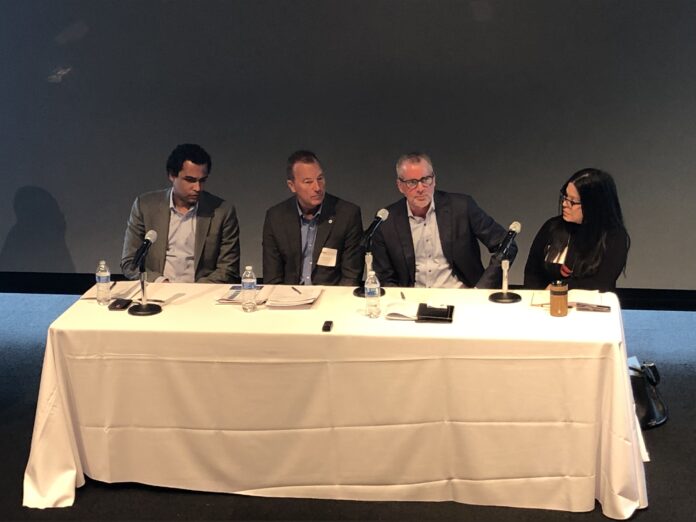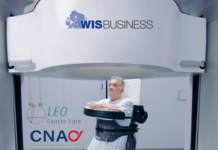An expert panel agreed on the transformative potential of federal funding for clean energy, but uncertainty remains about the timing of the funds, the dollar amount and the ultimate impact in Wisconsin.
Speaking yesterday at a Milwaukee event hosted by WisPolitics and WisBusiness, Wisconsin Office of Sustainability and Clean Energy Director Maria Redmond urged patience. She noted the U.S. Department of the Treasury is still developing guidance for the resources the sprawling Inflation Reduction Act will provide.
“This was released in August of last year … everyone is super excited about it, but we have to be patient, so that we make sure that we get it right, and we’re not jumping into projects and not being able to take advantage of the [tax] credits,” she said.
Justin Worland, a senior correspondent for TIME who covers climate change issues, explained the IRA’s $370 billion in funding includes clean energy incentives and programs for utilities, businesses and consumers.
“It’s pretty much all about incentivizing the private sector,” Worland said yesterday. “If you look through all of the opportunities … it all kind of comes back to, will companies take up the mantle, take advantage of these incentives and help build this new economy?”
With the federal law providing incentives over the coming decade, panelists highlighted a number of challenges along with the opportunities presented by this support. Worland noted much of the clean energy investment already happening is in the “battery belt” states, including Tennessee, Georgia and South Carolina.
“How do places like Wisconsin compete with these states that, quite frankly, are winning those investments because of lower wages, because they don’t have some of the same labor standards that are in other places in the U.S.?” he said.
Meanwhile, corporations like Johnson Controls — which has a corporate campus in Glendale — are forging ahead with new programs and initiatives linked to the clean energy transition. Chuck McGinnis, a senior executive at the company, said Johnson Controls is “hiring people specifically to grow this market” and help its customers take advantage of new federal help.
He touted the company’s “net-zero as a service” program, which provides sustainability offerings to facilities around the world. And he noted the business has set a goal of reaching net-zero carbon emissions by 2040.
“There seems to be unilateral, bipartisan support for energy efficiency measures and renewable energy measures that are cost-effective,” he said.
McGinnis also spoke to the importance of leveraging federal funding to maximize the impact of supported projects.
“By leveraging up, you accelerate and you’re able to take advantage of the IRA program at a speed and at a scale that maybe wasn’t otherwise to be achieved,” he said.
And he spotlighted energy efficiency programs as “the least expensive way” to reduce emissions, emphasizing the impact of investing in a variety of related technologies.
“Fuel cells, solar, heat pumps, clean vehicles, vehicle charging — there’s something in there for everybody,” McGinnis said.
But Randy Satterfield, a clean energy consultant who works with renewable developers, noted the IRA’s incentives and tax credits “only pay off if the work gets done.” He pointed to permitting challenges as a key issue for the state, referencing Wisconsin’s process for approving new transmission lines as an example. Under the current system, developers have to provide two possible routes to regulators.
“What if the state of Wisconsin decided that if you propose a route that’s on existing rights-of-way — like an existing transmission line right-of-way, or a highway right-of-way, or even potentially a rail right-of-way — maybe you don’t have to submit two routes,” he said.
By making this change, he argued the state would speed up the permitting process for transmission lines needed for new renewable energy developments.
Worland also highlighted permitting challenges, but focused more on the potential environmental impact of expanding transmission infrastructure. He referenced figures from Princeton University showing more than 80 percent of the potential emissions reductions tied to the Inflation Reduction Act would be lost by 2030 if transmission expansion continues at its current rate.
Satterfield also said utilities in Wisconsin have been “ahead of the curve” in advancing renewable energy projects. Even before the IRA, he noted utilities in the state had been planning more than $7 billion in clean energy projects, many of which are in active development.
“What IRA will do is [to] help further speed that process, but also for those tax credits, help drive costs down for end users of electricity,” he said.
But Redmond noted the state’s goal of reaching 100 percent carbon-free electricity consumption is set for 2050, and Wisconsin is “very reliant” on fossil fuels like oil and gas for the time being.
Yesterday’s discussion also touched on concerns that implementation of the IRA is disrupted by a future administration. But while Worland acknowledged efforts to repeal the law, he said they’re not very serious.
“While these things are somewhat controversial for Republicans, they don’t have the same sort of political valence that things like Obamacare did,” he said. “I’m not sensing the same sort of, ‘go for the throat, destroy this thing at all costs’ that we’ve seen with other political issues.”
Watch Worland’s pre-panel keynote here: https://www.youtube.com/watch?v=924eV3H4cXk
Watch the full panel discussion: https://www.youtube.com/watch?v=6iOCUN7XIpQ
Find information on clean energy resources here: https://www.wisbusiness.com/2023/wispolitics-wisbusiness-clean-energy-resources/
See a recent story on how local governments are tackling climate issues: https://www.wisbusiness.com/2023/local-governments-band-together-on-climate-issues/
–By Alex Moe






